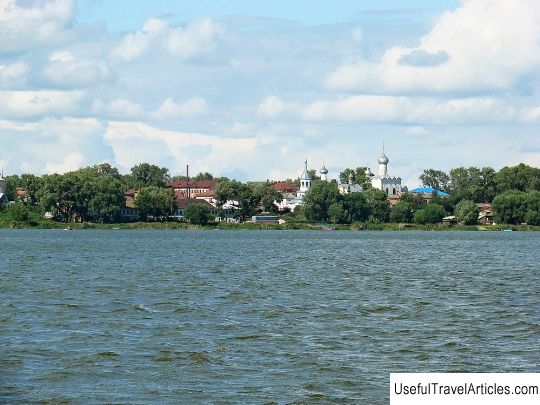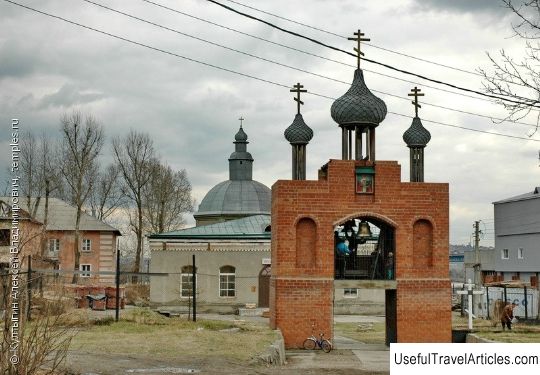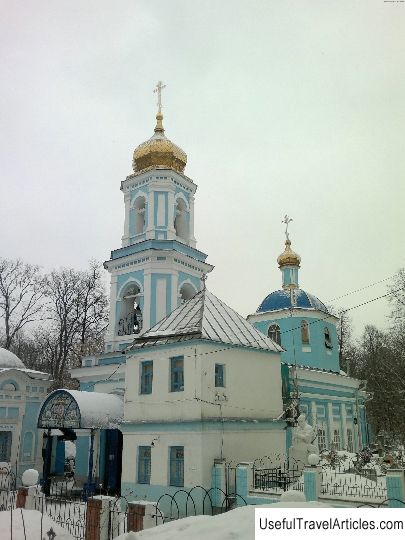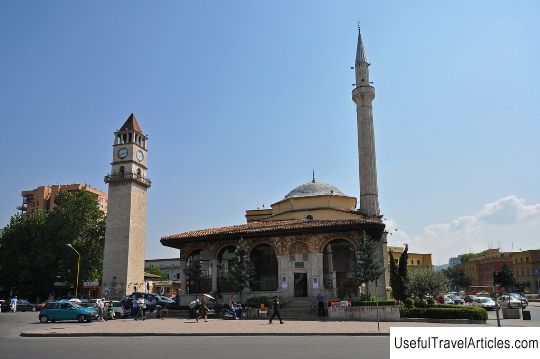Tolgsky monastery description and photos - Russia - Golden Ring: Yaroslavl
Rating: 8,1/10 (589 votes) 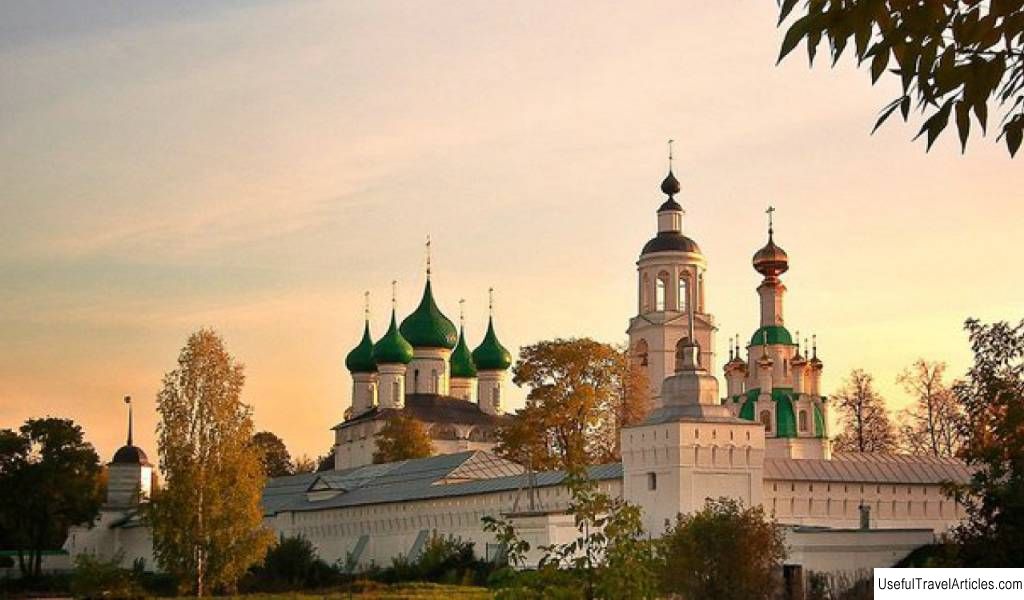
Tolgsky monastery description and photos - Russia - Golden Ring: Yaroslavl. Detailed information about the attraction. Description, photos and a map showing the nearest significant objects. Photo and descriptionOne of the most picturesque and ancient Russian monasteries is located near Yaroslavl. This is the first revived convent in Russia - monastic life has been going on here for over 30 years. The monastery is beautifully restored, it contains the revered miraculous Tolga icon of the Virgin and other shrines. History of the monasteryThe Tolga monastery was founded in 1314. Tradition connects this event with the finding of the icon of the Mother of God on the Tolga River , which has become its main shrine. It is believed that the first church of the Presentation of the Mother of God into the Temple, in which the wonderful icon was placed, was built exactly on the same day. It was, of course, made of wood. Such churches in Russia were called "ordinary". The monastery was built and grew rich. Like many Russian monasteries, it was destroyed during the Time of Troubles. In the 17th century, it was rebuilt: new brick churches appeared in place of wooden ones, a stone fence was erected. This construction is associated with the name of Hegumen Gordian , who headed the monastery for 27 years: from 1673 to 1700. Under him, the most extensive version of the Tale of the Tolga Icon was collected and written down, which describes its appearance and the miracles that came from it. This text is the main source on the early history of the monastery. The monastery continues to change and build in the 19th century: new cell buildings and a hotel for pilgrims appear. At the beginning of the 20th century, the 600th anniversary of the monastery is magnificently celebrated, and a major renovation is taking place. From 1907 to 1914 the bishop of Yaroslavl and Rostov and the abbot of the monastery was Fr. Tikhon (Belavin) is the future patriarch. The abbots of the monastery at the beginning of the 20th century are now revered as hieromartyrs: Archimandrites Seraphim (Samoilovich) - he was shot in 1937, and Methodius (Lvovsky) - shot in 1919. In 1918, the Tolga monastery supports Yaroslavl rebellion against the Bolshevik regime and helps its participants to hide after suppression. In August 1918, the Red Guards burst in here. There were found 12 officers, with weapons and documents. Of course, all of them were arrested, and the monastery itself was also subjected to repression. Nevertheless, the monastery continues to exist until 1929. Nuns from the devastated Kazan women's monastery settled in the hotel, some of the premises were occupied by a children's colony, an almshouse and a military unit. But in the 1930s everyone was already evicted from here. The territory was transferred to Volgostroi, which is engaged in the construction of hydroelectric power plants on the Volga, the premises were occupied by the housing of employees and technical structures. Then the children's colony returns here. In 1987, when the 1000th anniversary of the baptism of Rus was celebrated, the monastery was revived. It became the first nunnery to be opened after the revolution. Now it is one of the richest, most beautiful and prosperous monasteries in Russia. What to see in the monastery Above the Holy Gates - the front entrance to the monastery - there is a gateway Nikolsky Church of 1672. Once on the sides of the temple there were two round gate towers, which gave it monumentality, but they have not survived. The temple adjoined the bishops' chambers and was used as the home church of the bishops. In Soviet times, its head was blown up, and the entrance arch itself was laid. Now the temple has been restored and painted again. The Holy Cross Church is the earliest building of the monastery, it was built in 1625. This is a warm refectory temple, now it is still used in winter. It was rebuilt many times during the 18th-19th centuries. several chapels were added to it. A major renovation was carried out in the middle of the 19th century: the windows were widened and the vaults raised. On the one hand, a two-story building of the bishops' chambers was attached to it, and on the other, a gallery connecting the temple with the cold Vvedensky cathedral. During the Soviet era, the cathedral was significantly damaged. It housed a cinema, and removed the metal ties of the dome interfering with watching films. As a result, in the 1960s, the ceilings and the dome collapsed. The temple was restored in 1999 and painted again under the direction of the artist Nikolai Mukhin. Now it is in this cathedral that the main shrines of the monastery are located: the relics of St. Ignatius Brianchaninov and the Tolga Icon. The revered Tolga icon, which miraculously appeared to Bishop Prokhor, apparently was written in the 13th century. It has been kept in the Tolgsky Monastery since its foundation. In 1919, the painting was restored, it was cleared of later recordings by the artist F. Modorov. Then the icon was kept in the Yaroslavl Museum, at one time it was exhibited in an anti-religious exposition in the Church of Elijah the Prophet, then in the exposition of the museum itself. The icon was returned to the monastery in 2003. It was one of the first ancient icons donated to the church. The preservation of painting requires special attention from museum workers. The icon is in a special icon case, which allows maintaining the necessary microclimate for it. It is opened only for regular examinations by specialist restorers twice a year. Since 1988, it is in this church that the relics of St. Ignatiy Bryanchaninov. He was born in 1807, came from an old noble family and was going to become an officer: he studied in Petersburg, moved in literary circles, but his vocation was precisely the monastic life. Dmitry (that was his name in the world) was discouraged by everyone: both his parents and the leader. book Mikhail Pavlovich, and Emperor Nicholas I, and in the end he still received his resignation only due to poor health. He entered the Alexander-Svirsky monastery against the will of his father, became a spiritual writer and theologian, and from 1857 - a bishop. He was canonized in 1988. In the temple there is a list of another icon, which is revered as miraculous - this is from a list from the Athos icon "Economissa" . It is believed that it is especially helpful in all economic and financial matters. Brick Vvedensky Cathedral was built on the site of the very first monastery church in 1681-83. It is believed that the author of the project was the Rostov Metropolitan Iona Sysoevich, a talented architect. This is a typical four-pillar, five-domed temple with a high porch and an extensive lower part: it was intended to serve as a burial vault. Almost immediately after its construction, the cathedral was painted by Yaroslavl and Kostroma craftsmen - some fragments of these frescoes have survived. The cathedral underwent a major renovation in the middle of the 19th century, then a new iconostasis was installed and the paintings were updated. The current painting is the result of the work of restorers in the 1980s and 90s: the original frescoes of the 17th century are partially recreated here, the painting of the 19th century is partially preserved. The restorers used the surviving graphs - the outlines used by the Yaroslavl icon painters for their work. This made it possible to recreate the painting of the 17th century as accurately as possible. In the Soviet years In the Vvedensky Cathedral, a working model of the Rybinsk hydroelectric complex was located, and the interior decoration was significantly damaged. Since 1964, the restoration took place in stages, the last work was completed in 2008, when the walls were decorated with mosaic icons. The cathedral is still "cold", services are held in it only in summer. The bell tower of the cathedral was built in 1685 and was rebuilt in 1826. Once upon a time 11 bells rang on it - the first of them were cast with funds donated by Tsar Michael. All of them were thrown from the bell tower in 1929 at the closure of the monastery; none of the old bells have survived. And yet, the current bells are old, collected from museums and churches of the Yaroslavl diocese, these are bells cast in the 19th century, not in the 20th. Tradition connects the construction of the Savior Church with Ivan the Terrible . The tsar donated the ancient image of the Savior Not Made by Hands to the monastery - and a special wooden church was built for the icon. At the beginning of the 18th century, it was replaced by a stone one. It is a graceful nine-domed Baroque church. In the middle of the 18th century, a hospital building was added to it, and then several more outbuildings: there was a kitchen, a bakery, a refectory, etc. In this temple there was a tomb of the Yaroslavl nobility . In particular, A.P. Melgunov is buried here. This is a famous figure of the 18th century, since 1777 - the Yaroslavl governor. He did a lot for the development of the region: he compiled the first topographic descriptions, supported trade and culture, tried to limit the tyranny of the landowners in relation to the serfs. Lieutenant General Nikolai Tuchkov , the eldest of the four Tuchkov brothers, one of the prototypes of Andrei Bolkonsky from L. Tolstoy's novel "War and Peace", is also buried here. He was wounded in the Battle of Borodino near the Utitsky barrow and died of his wounds in Yaroslavl. Some of the noble burials were plundered in the 20th century, some remained intact and were found during the restoration process. Now on the Spassky Church there are memorial plaques in memory of the funeral here. At the southern wall of the Spassky Church there is a chapel built in 1893. It was erected over the burials of monks and peasants who died during the capture of the monastery by the Poles in 1609. Another chapel - a wooden one - was erected over the spring in 2000. It is dedicated to St. Tryphon. Since the 16th century there is a cedar grove and ponds near the monastery. In the 1970s, they tried to renew the grove, but new cedars took root badly: the old drainage system has collapsed. Now there are just over twenty ancient trees left here, which are more than 200 years old, several trees about 50 years old, planted in the 20th century, and more than a hundred young cedars. Interesting facts
Note
                       We also recommend reading Cathedral of the Assumption of Virgin Mary description and photos - Greece: Kalavryta Topic: Tolgsky monastery description and photos - Russia - Golden Ring: Yaroslavl. |
